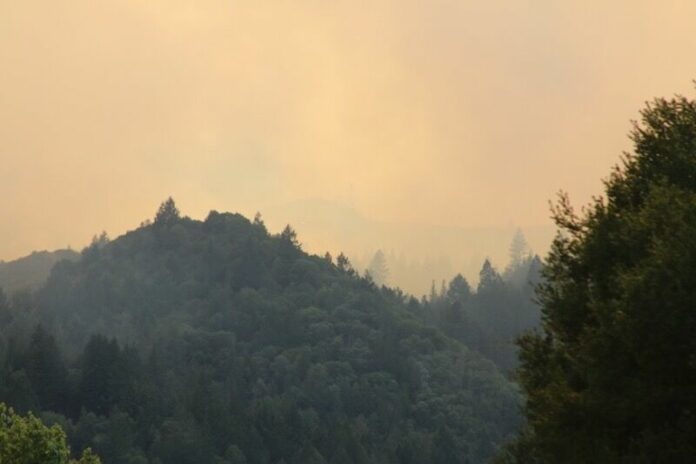Sonoma County’s Walbridge and Meyers fires are growing in containment and staying steady when it comes to acreage, with the Walbridge at 55,353 acres and 25% contained and the Meyers at 2,360 acres and 98% contained. Calm weather has allowed fire crews to continue to build lines around the fire and make headway on containment.
“That fire (Walbridge) has not moved in five days, so that’s making us feel really good about the progress that’s being completed there,” said CalFire Deputy Incident Commander Ron Myers.
Myers said that the Meyers Fire is now in “patrol status.”
The progress on the fires led to another evacuation order being downgraded to a warning Thursday evening, with people in portions of Guerneville being allowed back into their homes. According to an alert from the Sonoma County Sheriff’s Office, areas north of the Russian River, south of Rio Nido Road at Armstrong Woods Road, west of Foothill Boulevard at River Road and east of Old Cazadero Road are being allowed back into the area.
River Road remains closed from Hacienda Bridge to the intersection of Foothill Boulevard and River Road. The community of Rio Nido is still under an evacuation order, as is Old Cazadero Road north of Old Cazadero Road at Chimney Rock Road and Pool Ridge Road.
When asked when Armstrong Woods Road will be open, CalFire Division Chief Ben Nicholls said that it will be “at least a week” until the road will be able to open, since crews are still going through the area making sure it’s safe. He added that CalFire is still seeing trees fall in the area and will need to be sure that trees won’t pose a threat once people are allowed back on the road.
For Rio Nido residents, he said that CalFire wants to “make sure we are cold and not at any risk of flare-up or any rollout material starting new fires” before the evacuation order is lifted.
“There’s over 1,000 fire personnel assigned to the Walbridge incident and we continue to work to bring that fire into containment. It’s a backing fire at this particular point,” Myers said.
Over the past few days, crews have worked to solidify lines on the east side of the fire and are continuing to conduct fire operations that will help prevent fire from spreading.
“We’ve transitioned across the majority of the fire area into the mop up and patrol status,” Nicholls said.
While damage assessment crews are still surveying how many structures were damaged or destroyed by the fires, Sonoma County Director of Emergency Services Chris Godley said that the county has identified 91 structures thus far that have been classified as having endured major damage or were destroyed.
Those 91 structures are likely a mixture of conventional homes and additional structures, like barns. More specific information will be pieced out in the coming days.
The state has had around 1.6 million acres of land burned by fires this year, and the LNU Lightning Complex Fire is ranked second in the state’s history as destroying the most acreage (the SCU Lightning Complex Fire is currently a few thousand acres behind the LNU). According to CalFire Unit Chief Shana Jones, the state had about 55,000 acres burned by this time last year.
“It’s only August,” Jones said. “We are nowhere near the peak wildland fire season. As you remember, our large fires usually occur sometime in October and we have a lot of fire season to go.”
While the county is still watching the fires, it’s also pivoting to helping individuals who have been impacted by the fires or evacuation orders. It will be opening two local assistance centers this weekend — one in Guerneville and one in Healdsburg — to help provide resources to those who need it. According to Godley, the centers will likely be open for a week.
“We’re going to be there for folks, whatever it takes,” he said.
District 5 Supervisor Lynda Hopkins and District 4 Supervisor James Gore are also both encouraging people to look ahead at what challenges may appear in the upcoming fire season.
Gore suggested that areas start creating COADs (community organizations active in disasters), which bring together key organizations and community partners that often step up in times of emergency to fill gaps of service in a community during emergencies.
“People might seem exhausted,” Gore said. “I’ll tell you what — this is home. This is our time to rise up, Sonoma strong. We all have to work through this together, and join us in supporting our neighbors.”
Hopkins said that the county needs to look at ways it can better manage its woodland areas, since the high-density timber in the west and northwest part of the county helped contribute to the spread of the Walbridge Fire.
“At this point the area that needs to be treated and the resources we have to do that means we can’t do it overnight,” Nicholls said, referring to the possibility of implementing more prescribed burns. “There’s a large task ahead of us, so we look forward to working with landowners to further those prescribed burning projects in the future.”








